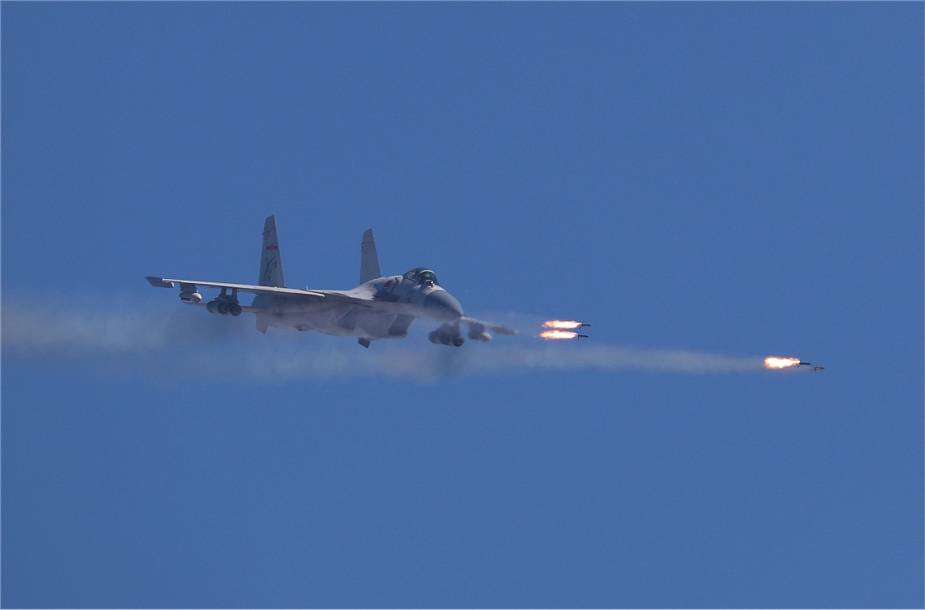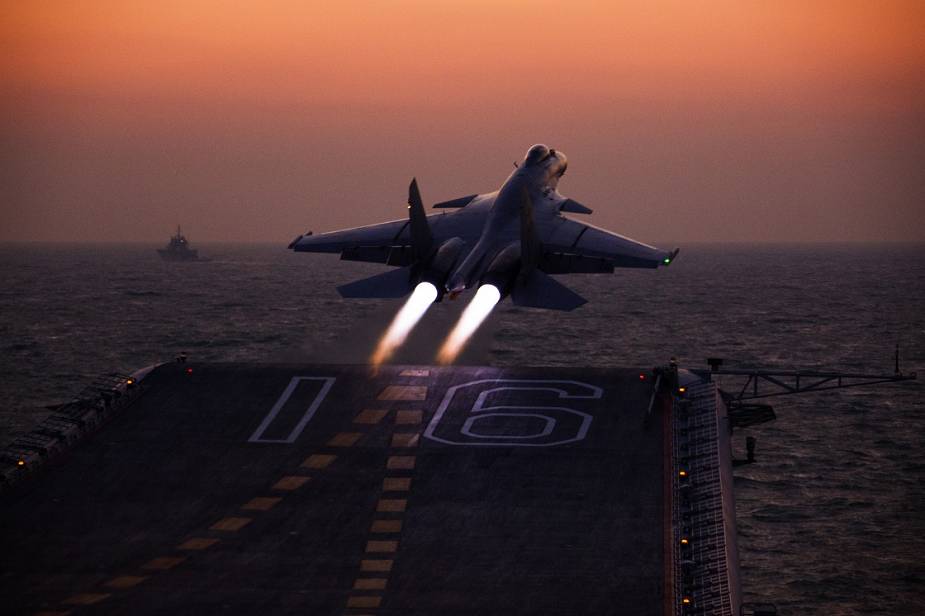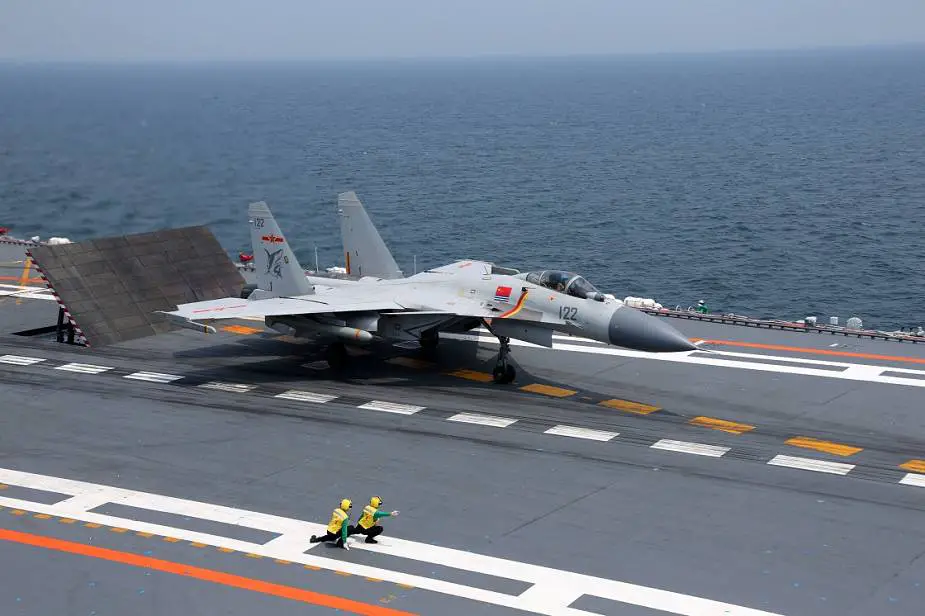Breaking news
J-15 fighter of Chinese Navy aircraft carrier Liaoning conduct live firing and refueling training exercises.
According to information published by the Chinese MoD (Ministry of Defense), the Chinese aircraft carrier Liaoning Type 001 has conduct flight operations with its onboard J-15 fighter carrier strike group including live firing and refueling training exercises.
Follow Navy Recognition on Google News at this link
 J-15 fighter of Chinese Navy aircraft carrier Liaoning Type 001 conducts live firing exercise. (Picture source Chinese MoD)
J-15 fighter of Chinese Navy aircraft carrier Liaoning Type 001 conducts live firing exercise. (Picture source Chinese MoD)
The J-15 is the main fighter aircraft uses onboard the Chinese aircraft carrier Liaoning. According to Chinese military sources, the Liaoning would carry 36 aircraft including 24 Shenyang J-15 fighters, six Changhe Z-18F anti-submarine warfare (ASW) helicopters, four Changhe Z-18J airborne early warning helicopters and two Harbin Z-9C rescue helicopters. The flight deck is able to carry about 50 warplanes, including helicopters and fixed wing aircraft.
The Chinese aircraft carrier Liaoning is equipped with a ski-jump flight deck for launching aircraft, an upward-curved ramp that allows aircraft to take off from a runway that is shorter than the aircraft's required takeoff roll. By forcing the aircraft upwards, lift-off can be achieved at a lower airspeed than that required for sustained flight, while allowing the aircraft to accelerate to such speed in the air rather than on the runway. Ski-jumps are commonly used to launch airplanes from aircraft carriers that lack catapults.

The J-15 is the main fighter aircraft uses onboard the Chinese aircraft carrier Liaoning. (Picture source Chinese MoD)i
The Shenyang J-15 is a 4th generation, twin-jet, all-weather, carrier-based fighter aircraft in development by the Shenyang Aircraft Corporation and the 601 Institute for the Chinese People's Liberation Army Navy's aircraft carriers.
The design of the Chinese J-15 fighter aircraft seems very similar to the Russian Su-33. It is powered by two Shenyang WS-10A engines. It is capable of speeds of up to 2,410 kilometers per hour and fly for distances of up to three thousand five hundred kilometers.
The aircraft ha an empty weight of around 17,500 kg and its maximum take-off weight is 33,000 kg.It has a length of 21.9m, a width of 7.4 m and a wingspan of 14.7m.
The J-15 is armed with one 30 mm GSh-30-1 cannon with 150 rounds and carrier a wide range of bombs, rockets and missiles on twelve external hardpoints, including eight PL-12 or R-77 air-to-air missiles, and four PL-9 or R-73 air-to-air missiles, or PL-15 long-range air-to-air missile as well as YJ-62 or Kh-41 anti-ship missiles and YJ-91 supersonic anti-ship missile.
Citing Global Security website, A modified two-seat variant of the J-15 fighter jet was spotted at a Chinese aircraft carrier training base in a December 2018 TV program, suggesting the carrier-based warplane is already being tested and expected to greatly expand the carrier's combat capability with electronic warfare equipment that one pilot cannot manage. The People's Liberation Army (PLA) Navy only operates the single-seat J-15 fighter jet on the Liaoning aircraft carrier at the moment, but military analysts predict the two-seat variant of the warplane would be able to join the ranks within two years.
 The Type 001 Chinese aircraft carrier Liaoning is equipped with a ski-jump flight deck for launching aircraft. (Picture source China MoD)
The Type 001 Chinese aircraft carrier Liaoning is equipped with a ski-jump flight deck for launching aircraft. (Picture source China MoD)
 A J-15 fighter aircraft onboard Chinese aircraft carrier Liaoning Type 001 ready to take-off. (Picture source Chinese MoD)
A J-15 fighter aircraft onboard Chinese aircraft carrier Liaoning Type 001 ready to take-off. (Picture source Chinese MoD)


























